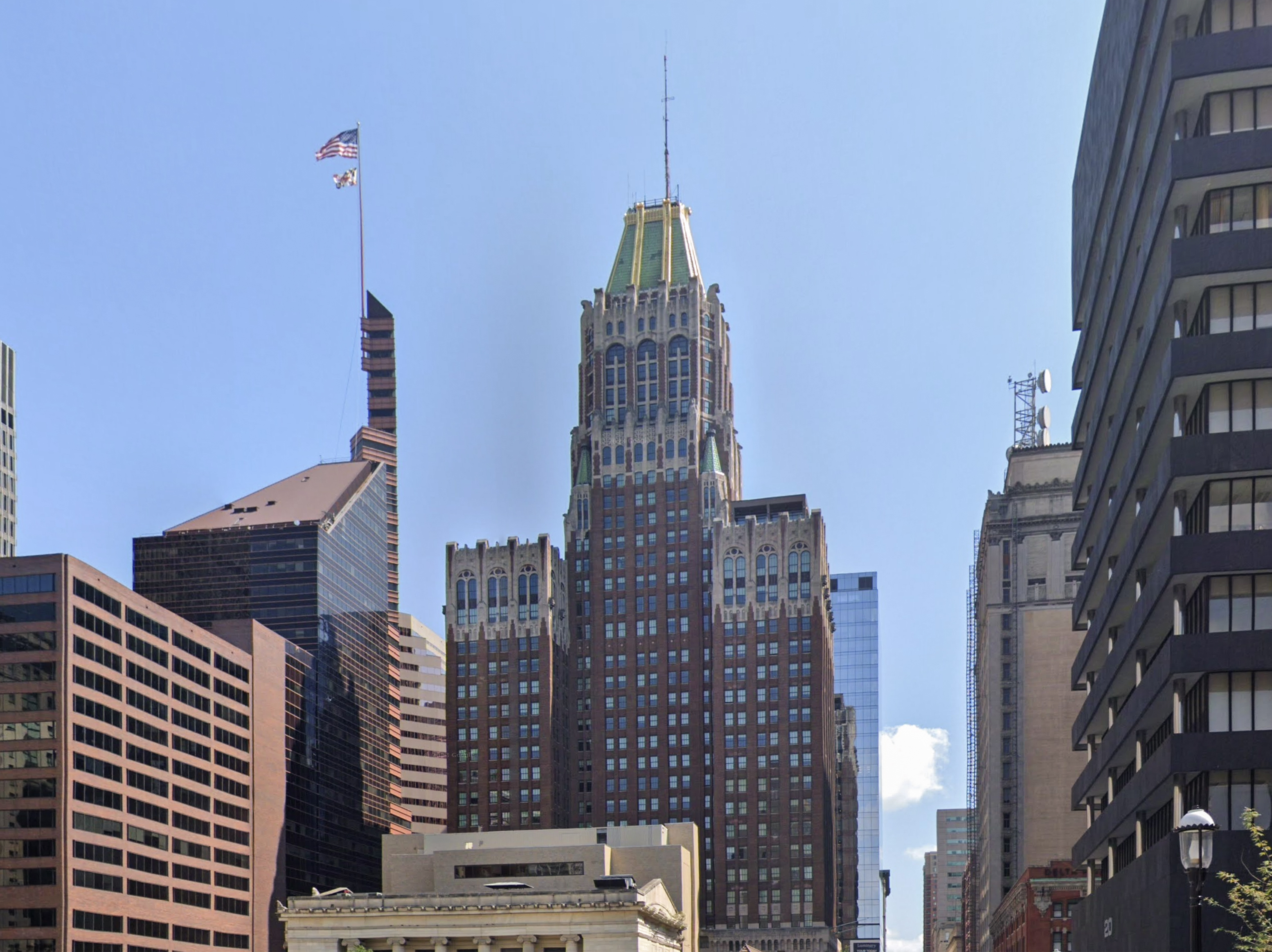The Bank of America Building is an Art-deco skyscraper designed by Taylor & Fisher, in association with Smith & May, and built between 1928 and 1929, for a reported $3.00 million dollars, in Baltimore, MD.
Bank of America Building is not the only name you might know this building by though. It is common for companies to want to attach their names to iconic buildings when they move in, or for the general public to come up with nicknames, and this one is no exception. The building has changed names several times over the years, and is also known as:
- Baltimore Trust Company Building between 1929 and 1933.
- Mathieson Building between 1940 and 1960.
- Maryland National Bank Building between 1961 and 1993.
- NationsBank Building between 1993 and 1997.
- Bank of America Building from 1997 until this day.
- 10 Light Street from 2012 until this day.
Its precise street address is 10 Light Street, Baltimore, MD. You can also find it on the map here.
The Bank of America Building has received multiple architecture awards for its architectural design since 1929. The following is a list of such prizes and awards:
- ULI Wavemaker Award in 2016
- Historic Preservation in 2017
- AIA MD Award
At the time of its inauguration, the Bank of America Building was the tallest building south of New York.
The building underwent a major restoration between 2012 and 2015. The architect commissioned to undertake this restoration was BCT Design Group.


